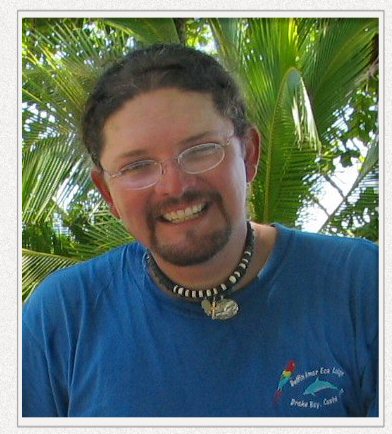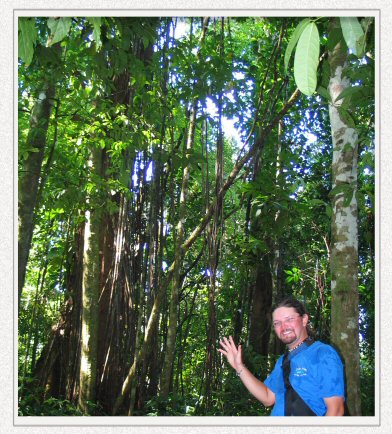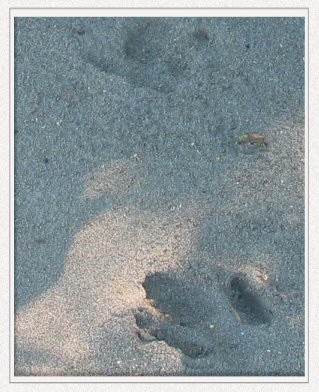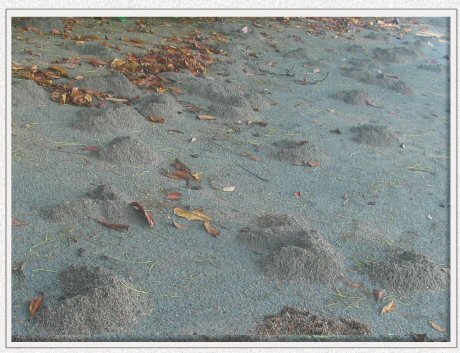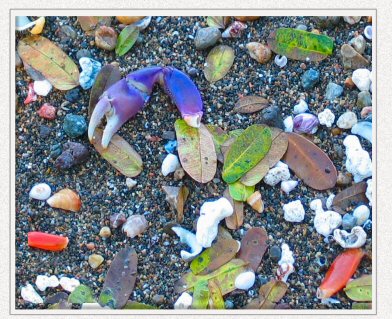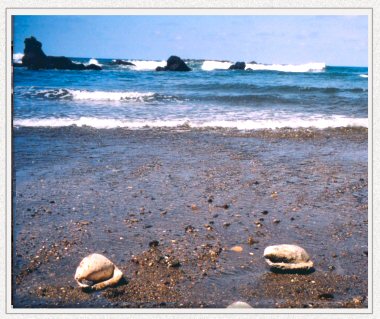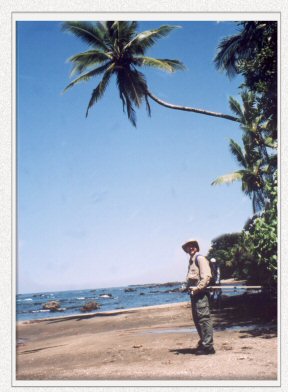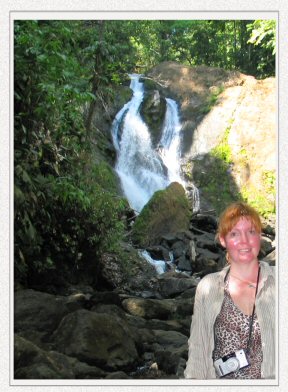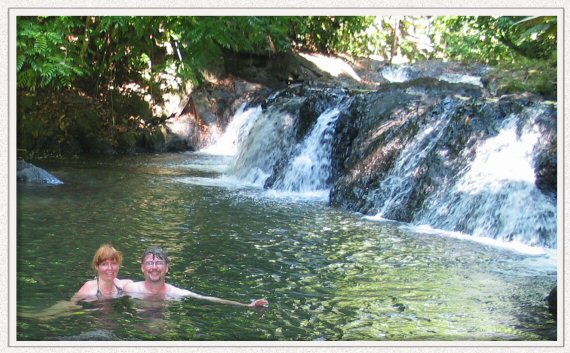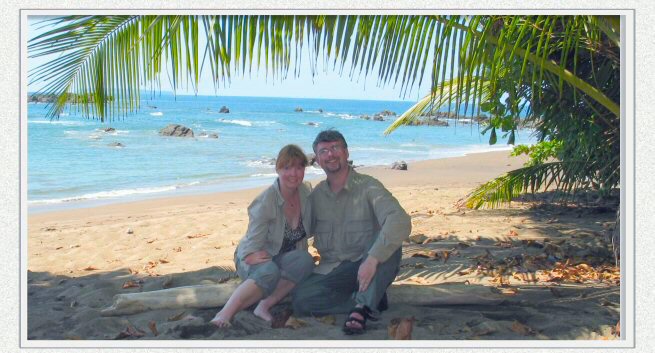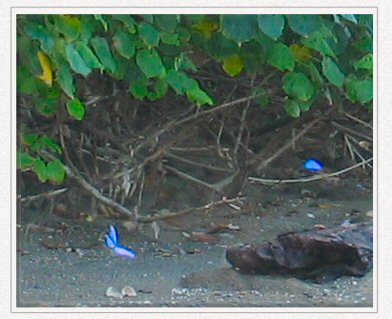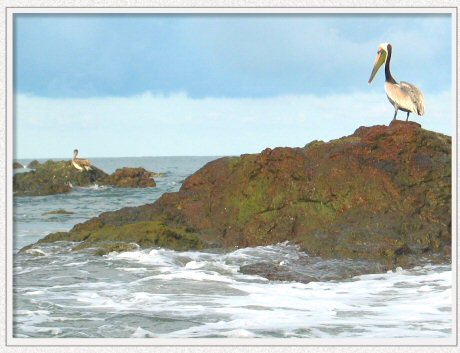 Corcovado
is one
of "the most biologically intense places on earth",
according to
National Geographic. Its rain
forest are by far the most exuberant in Central
America.
500 different variety of trees grow here and up to 100
species can be
found growing
on
just 2 acres of land.
Corcovado
is one
of "the most biologically intense places on earth",
according to
National Geographic. Its rain
forest are by far the most exuberant in Central
America.
500 different variety of trees grow here and up to 100
species can be
found growing
on
just 2 acres of land.
The Park is home to Giant Anteaters,
Tapirs, Sloths and a few big cat
species, like the Jaguar, Ocelot,
Pumas and Margay. Four
species
of Monkeys live in the trees overhead: the
Howler, White-Faced
Capuchin,
Spider
and Squirrel Monkey.
It also protects the largest population of
Scarlet
Macaws in Costa Rica,
plus its
home to at least 375 other species of birds, 140
mammals, 116 of
amphibians
and reptiles, 40 types of fresh water fish. Plus 6000
- 10,000
different
kinds of insects including 220 species of butterflies!
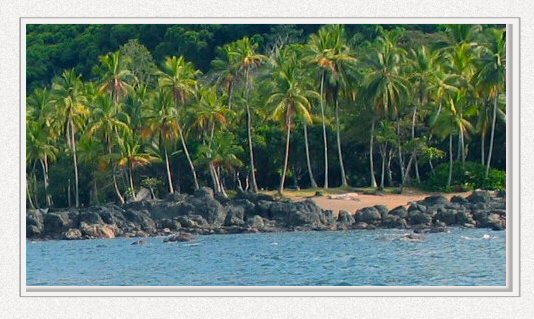
 Corcovado
is one
of "the most biologically intense places on earth",
according to
National Geographic. Its rain
forest are by far the most exuberant in Central
America.
500 different variety of trees grow here and up to 100
species can be
found growing
on
just 2 acres of land.
Corcovado
is one
of "the most biologically intense places on earth",
according to
National Geographic. Its rain
forest are by far the most exuberant in Central
America.
500 different variety of trees grow here and up to 100
species can be
found growing
on
just 2 acres of land.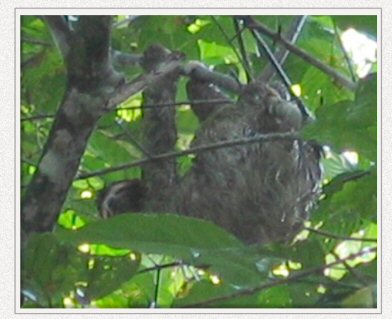
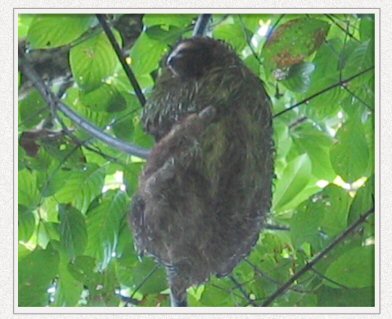 Sloths
have thick brown and slightly greenish
fur. The
green is actually algae encrusting in their fur, to help
camouflage the
Sloth in its
forest environment.They
are
roughly 2 feet long, weighing about 10 pounds. The Soth is a herbivore,
enjoying leaves, tender young shoots, and fruit.
They have nine vertebra,
where
most
mammals have seven. This allows
them to turn their heads 270 degrees! The
Sloth
descends to
the ground once a week to defecate. It climbs
down the trunk of a tree, digs a hole, does its business and
covers it
up before climbing back into the tree. This whole process
takes nearly an hour because
they move so slow. There
are
five
species of Sloths, but only two species live in Costa Rica,
the
Three-toed Sloth and the Two-toed Sloth. Sloths live up to 40 years!
Sloths
have thick brown and slightly greenish
fur. The
green is actually algae encrusting in their fur, to help
camouflage the
Sloth in its
forest environment.They
are
roughly 2 feet long, weighing about 10 pounds. The Soth is a herbivore,
enjoying leaves, tender young shoots, and fruit.
They have nine vertebra,
where
most
mammals have seven. This allows
them to turn their heads 270 degrees! The
Sloth
descends to
the ground once a week to defecate. It climbs
down the trunk of a tree, digs a hole, does its business and
covers it
up before climbing back into the tree. This whole process
takes nearly an hour because
they move so slow. There
are
five
species of Sloths, but only two species live in Costa Rica,
the
Three-toed Sloth and the Two-toed Sloth. Sloths live up to 40 years!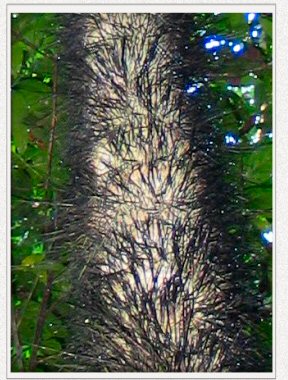
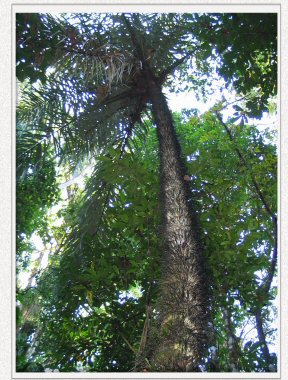
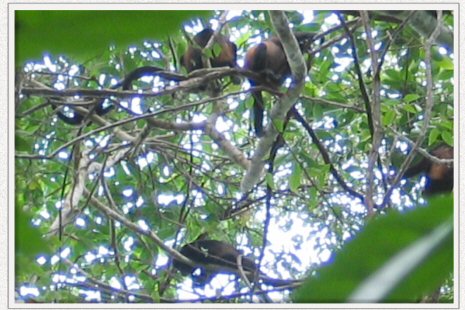
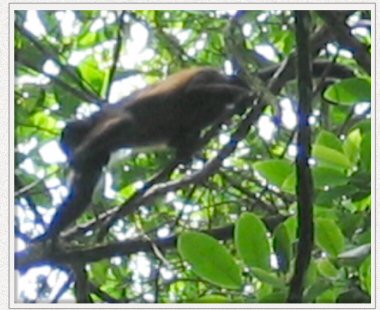 We saw a group
of Mantled Howler Monkeys enjoying life and eating
tree leaves.
We saw a group
of Mantled Howler Monkeys enjoying life and eating
tree leaves.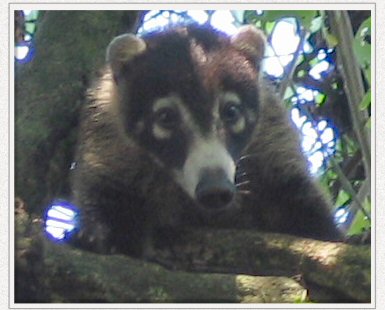
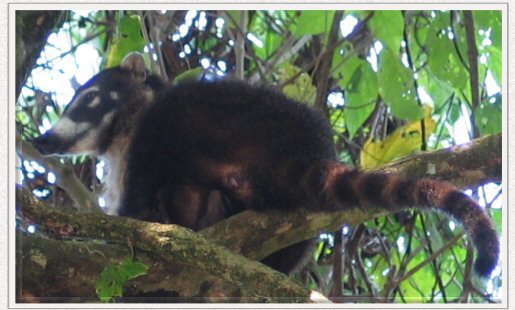
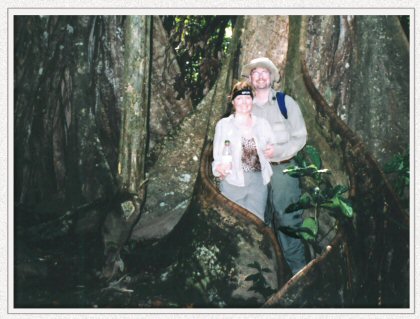
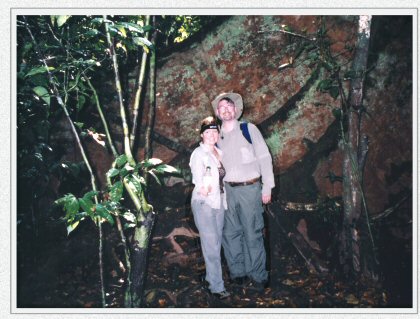 Enormous trees and
their roots
are abundant.
Enormous trees and
their roots
are abundant. 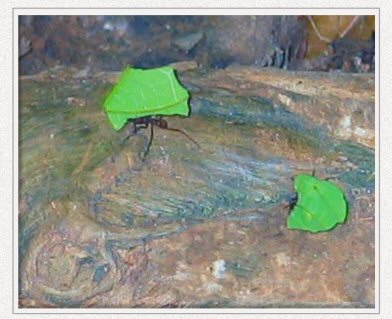
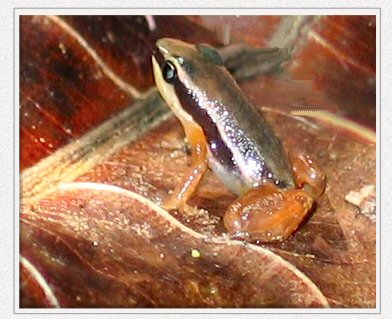 Roy our guide found
this
little frog under some leaves by a stream.
Roy our guide found
this
little frog under some leaves by a stream.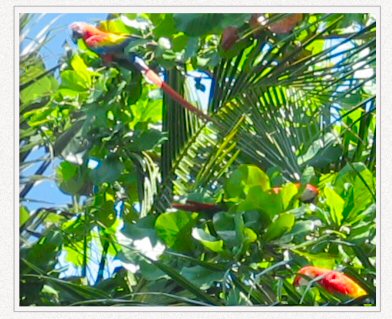
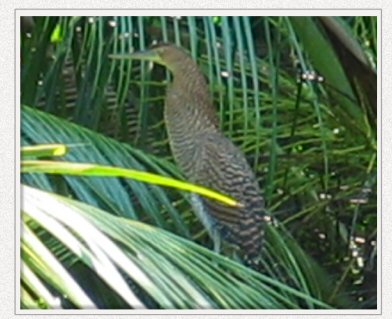 A
magnificent
experience
is seeing Scarlet
Macaws flying freely in
their natural habitat.
They can fly at speeds up to
35
miles
per hour, often in pairs or small flocks.
Here they are
eating fresh almonds in almond trees.
A
magnificent
experience
is seeing Scarlet
Macaws flying freely in
their natural habitat.
They can fly at speeds up to
35
miles
per hour, often in pairs or small flocks.
Here they are
eating fresh almonds in almond trees.